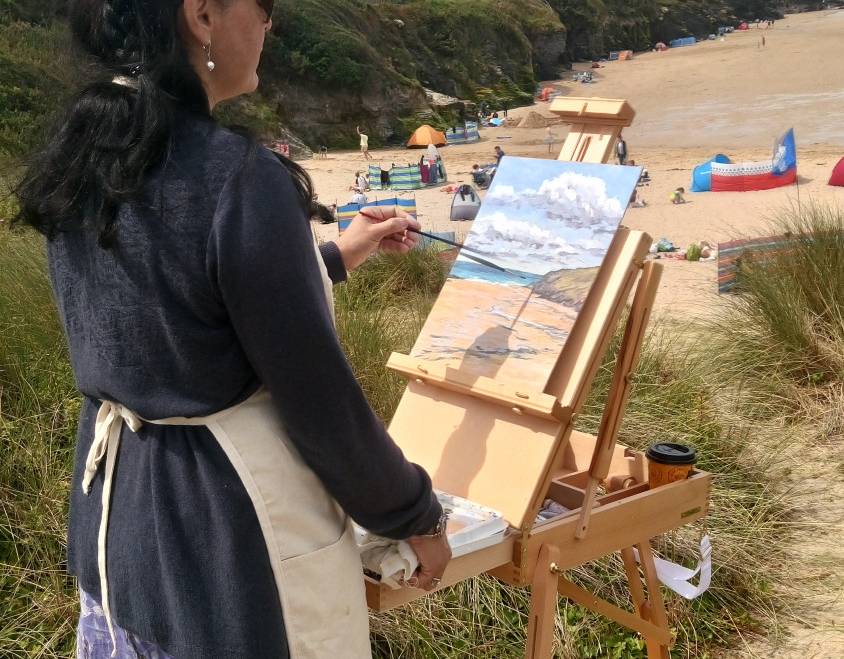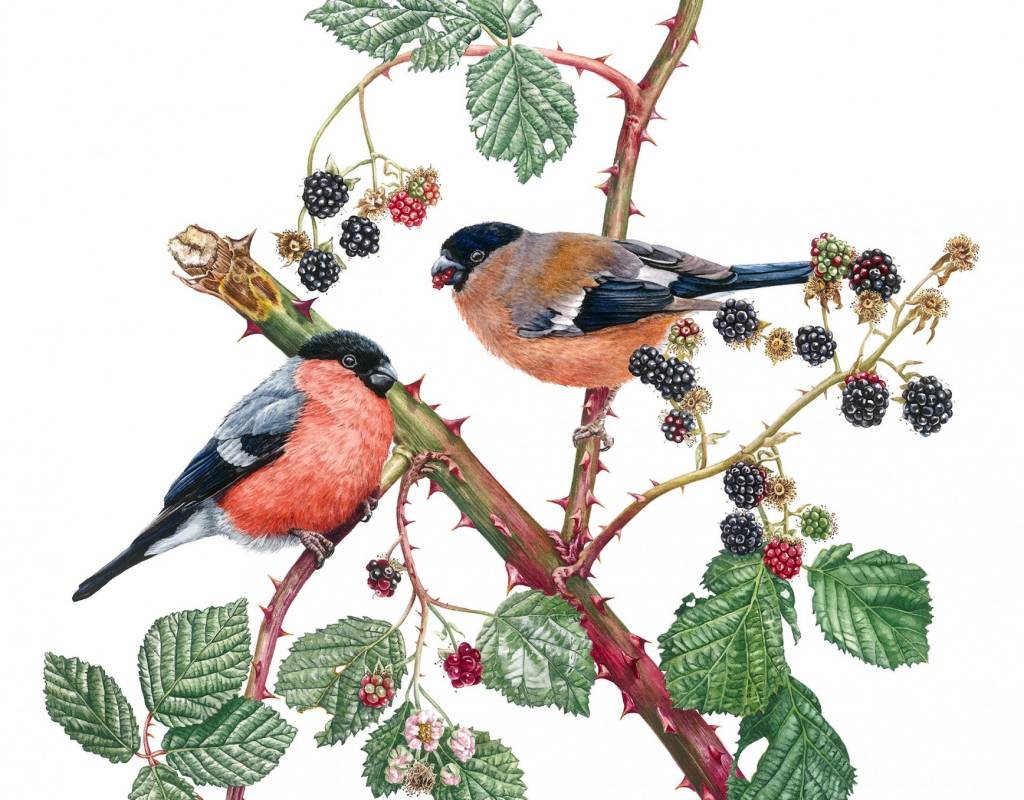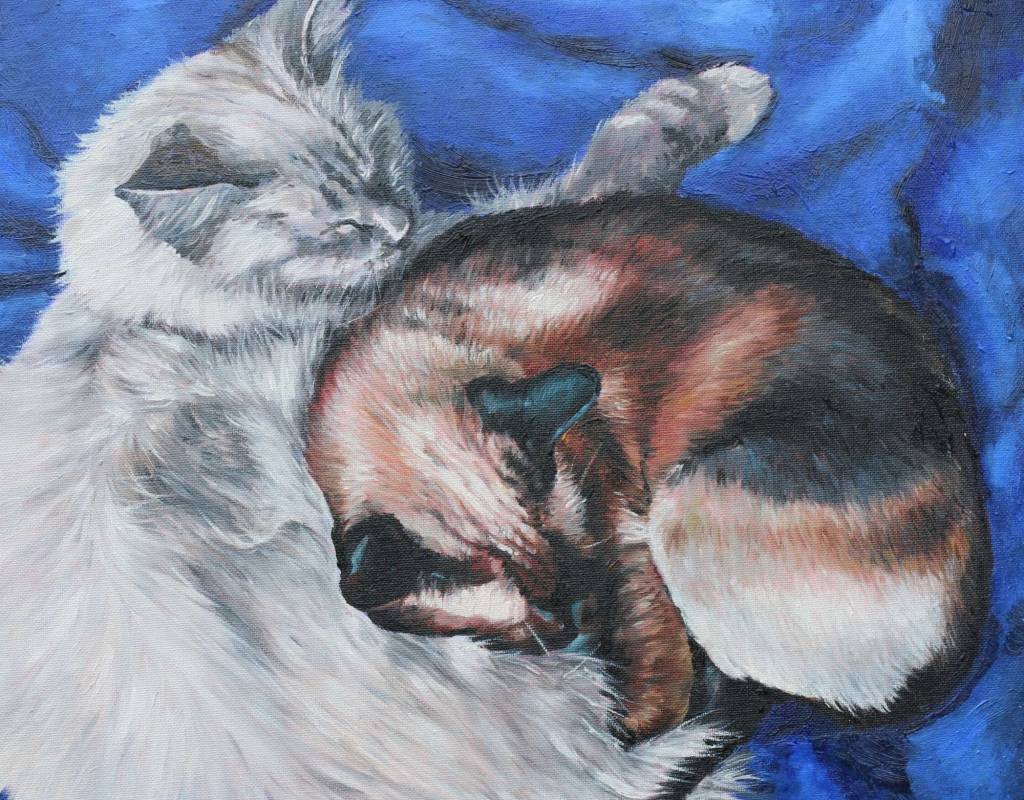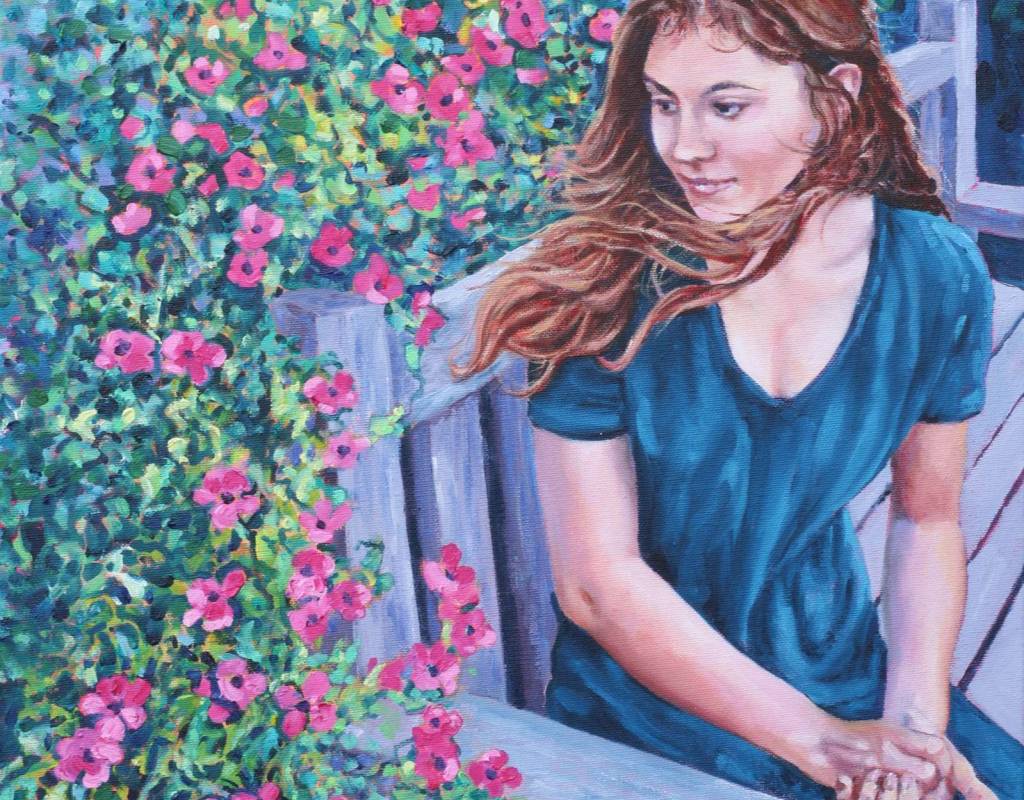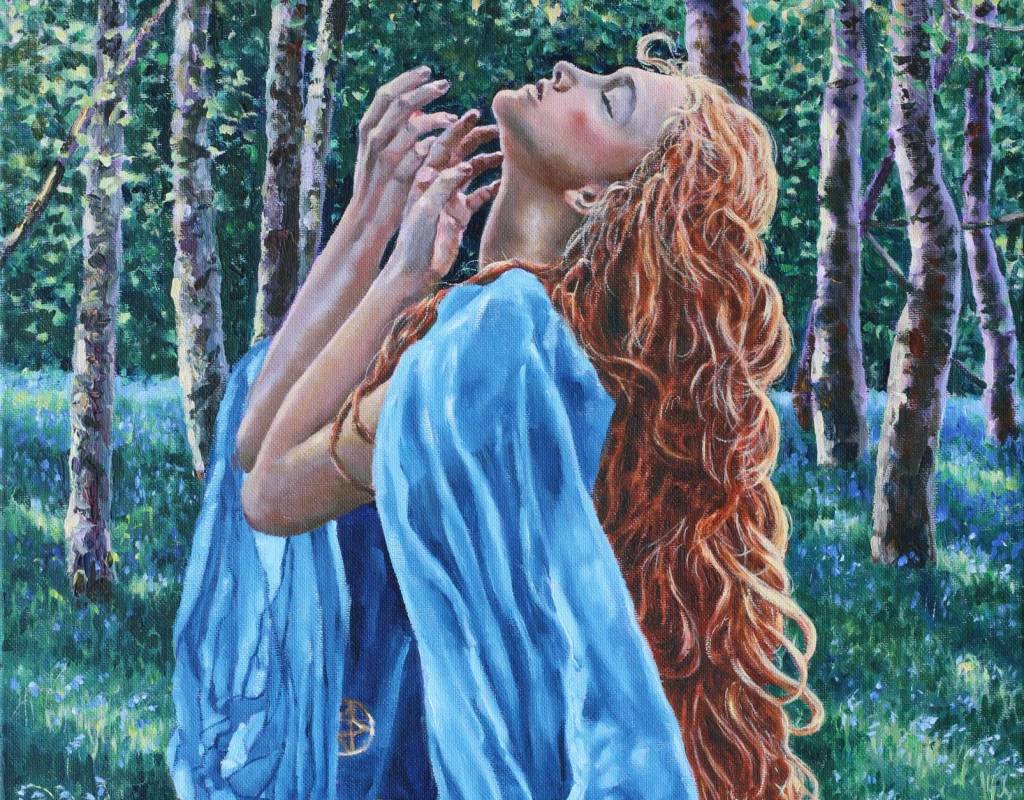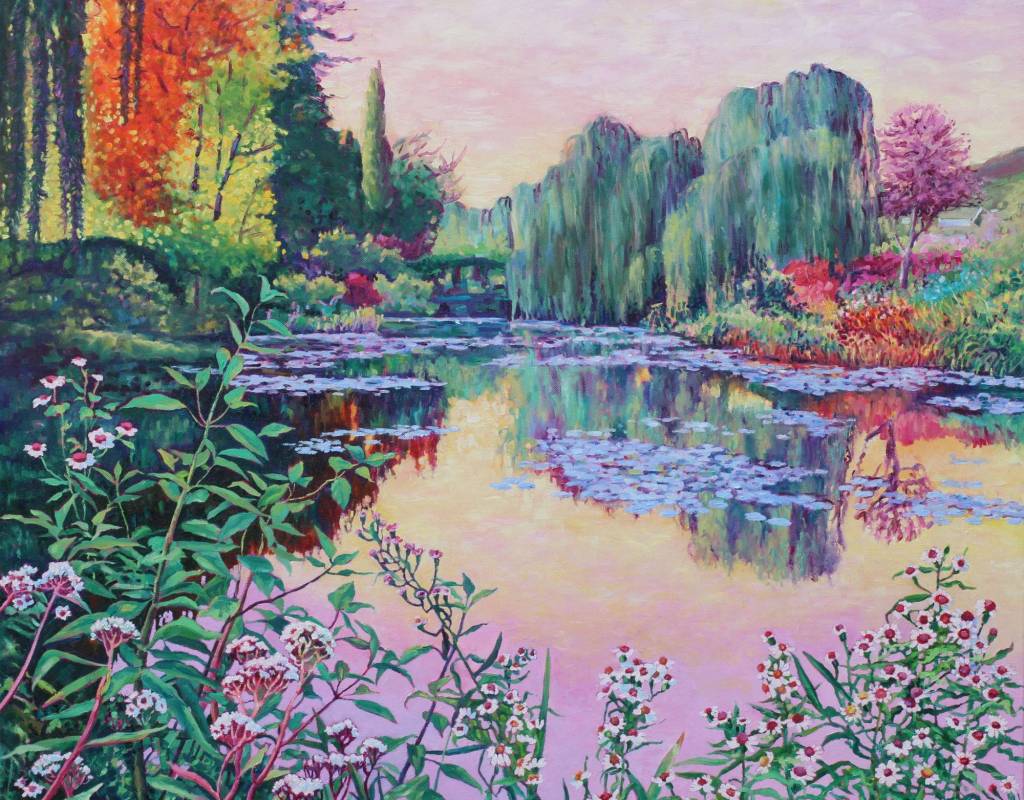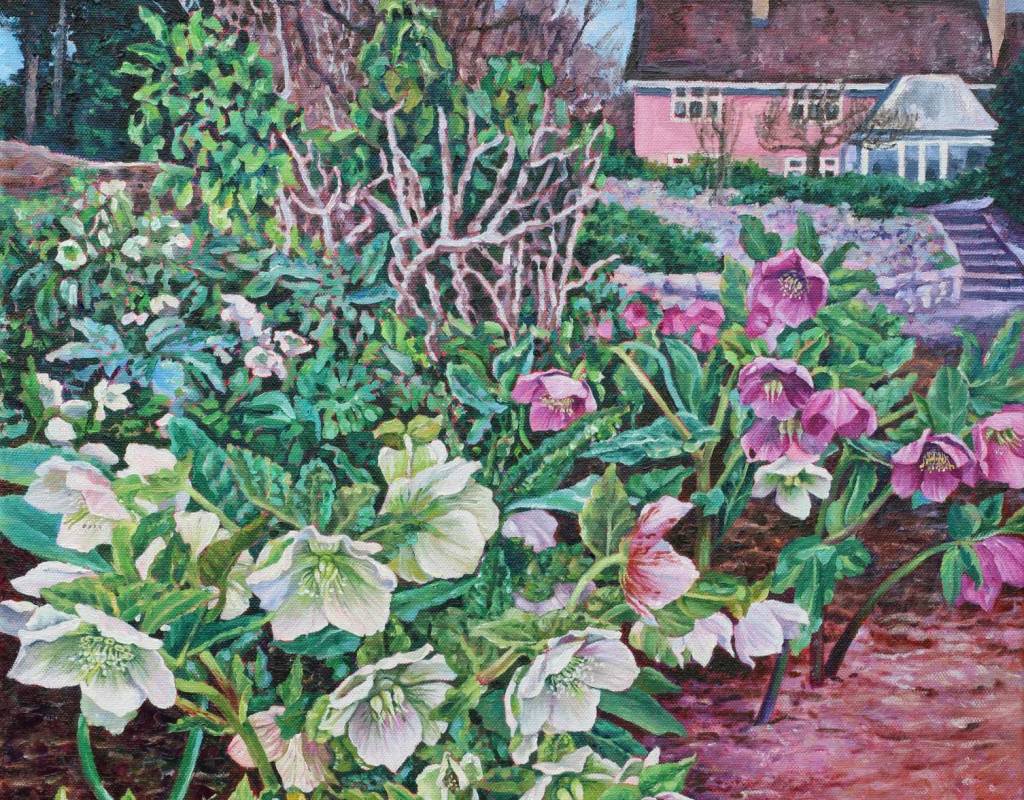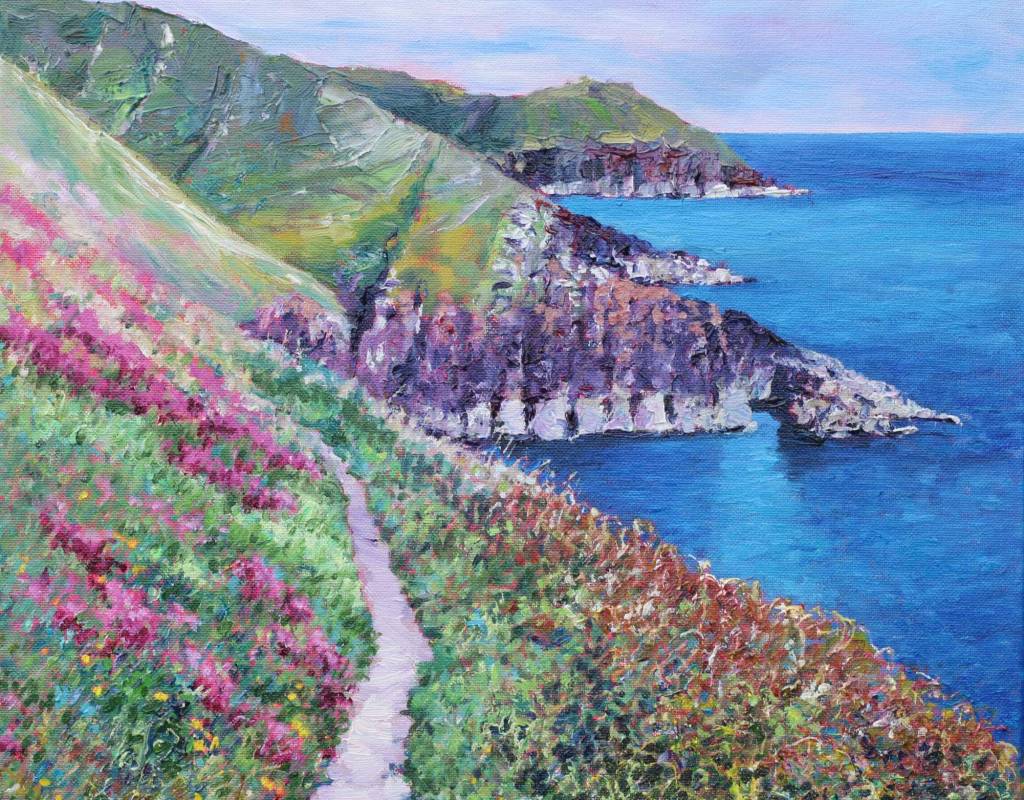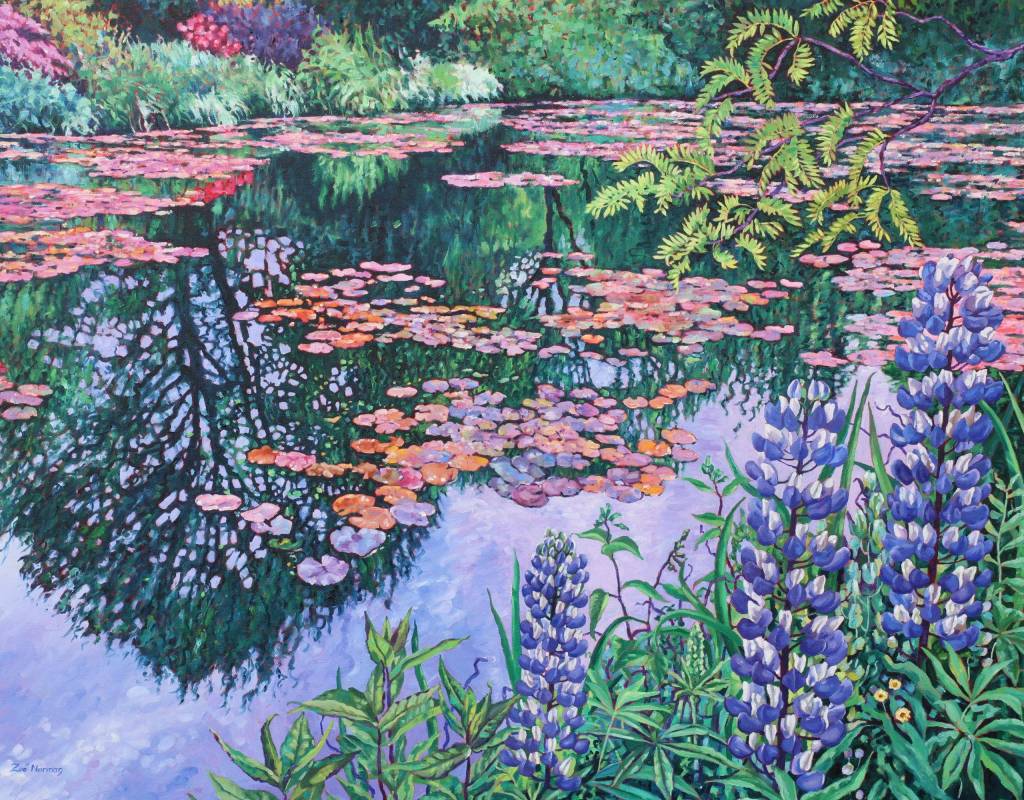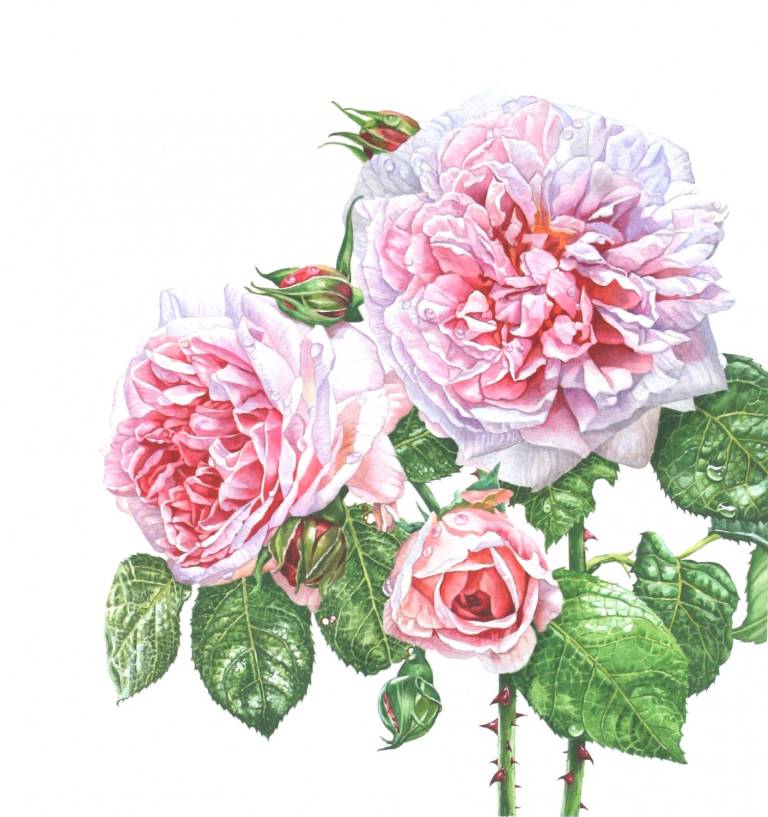Gallery Interviews
Spotlight Magazine - Issue 41
2024
Artfinder Gallery Interview
https://www.artfinder.com/blog/post/artist-interview-2024-zoe-norman/#/
Gallery Interview With Zoe - 2016
1. How do you find inspiration for your work?
I find inspiration from the things that I love. Many of my paintings are detailed portraits of flowers. I am a keen gardener and plant collector and it is safe to say I am as passionate about plants as I am about painting. It therefor makes a lot of sense that when I’m not pottering about in the garden I am painting flowers in my studio.
I have always loved colour, if you asked me to name my favourite colour one day you would get a different answer the next as my mood dictates my taste. Colour is my biggest inspiration and features strongly in all my work; this is probably why I don’t do a lot of sketching and keep drawing to a bare minimum. It’s always the colours of a scene, animal or flower which has inspired me and I just want to capture these colours as faithfully as I can. I have always loved watching the wildlife around me from a young age and as I started to draw and paint it was a natural progression to include wildlife in my art. I like to paint animals that I am familiar with or animals that live in a habitat that I particularly enjoy painting. I have hundreds of photographs which remind me of scenes that particularly inspired me when walking and travelling. Sometimes an animal at a zoo gives me an idea for a painting and I then have to work on a background to suit, or sometimes I am captivated by a landscape and I choose an animal to inhabit it for example ‘Glacial Heights’. In this painting the alpine landscape was my starting point but as it’s the natural home of this magnificent wild cat, I had to have the Lynx in the foreground.
2. Your paintings explore aspects of nature and wildlife. Where did your love of nature stem from?
As a small child I was always outdoors playing, climbing trees and making dens in my nana's back garden and in the waste ground behind my mum’s house. I became very aware of the birds and insects around me particularly ladybirds and butterflies. I remember the summer of 1976 particularly well not only because it was incredibly hot and dry but also because we had a ladybird swarm. My nana was going to have a bonfire and I was so worried that the ladybirds would be hurt that I collected hundreds in jars! When I was older I used to walk miles into the countryside with my friend, exploring woodland, following little rivers and tramping across sheep fields, I think this immersion into the natural world at such an impressionable age led to my lifelong love of nature. I’ve always had a special interest in birds and love watching and sketching them in the garden. As I got older my interest in animals grew and as I started being creative it was always animals that were my inspiration. I particularly loved horses and I used to make little model horses out of pipe cleaners and wool or cardboard cut outs with stands. These were so popular at school I used to make them for my classmates too. Eventually I became more interested in wild animals and trips to zoos and nature reserves encouraged me to paint.
3. What is your favourite spot to visit to embrace yourself in nature?
I am very lucky to live in a beautiful part of the world. Norfolk is famed for its huge dramatic skies and great light. I am also only an hour away from stunning coast line and a grey seal colony. I get quite a lot of ideas from small areas of woodland and hedgerow near my home and I actually really like just taking my chair and pastels up the road and sitting in a nearby field to paint. I am a member of the National Trust and often visit their wonderful gardens and parkland for inspiration. My other real passion is for the Alpine landscape. I love the huge vistas with background mountain and glaciers.
4. You mentioned your pathway as an illustrator led you to work with some large publishers. Could you describe your favourite illustration that you have commissioned to date?
One day in my studio I was rearranging and composing a still life with flowers when I noticed a couple of old china tea cups on my dresser and decided to use them. The result was ‘Tea Cups and Lace’ which was a simple composition with a line of tea cups, flowers and butterflies on a white lace tablecloth. This painting led to my most successful phase of illustrating and, many different tea cup and flower paintings, which have been reproduced by The Medici Society, UK Greetings, Nigel Quiney, Abacus and Phoenix. My favorite illustration is a tea cup themed painting commissioned by UK Greetings and has been so popular that it is still in print a decade later. The piece is called ‘Poppies and Tea Cups’ and was an ambitious undertaking. Each tea cup was carefully drawn in position; before I moved on to paint all the flowers one by one starting with the poppies. Poppies only last a few hours so it was a race against time! When all the flowers were complete I painted the tea cups, followed by the lace and finally I added the butterflies. I used Windsor and Newton watercolours on Fabriano Classico hot pressed paper and my technique uses many layers to build up the detail and rich colour. I used a very detailed style to paint this piece which has a crisp white background and very bright vivid colours in the tea cups and flowers.
5. 'Rosa Eglantine' has a stunning composition. What inspired you to create this piece?
Roses are my favorite flowers of all especially David Austen shrub roses. I have incorporated them into my still life paintings many times before, but this time I really wanted to just paint the rose as a botanical specimen. I chose ‘Rosa Eglantine’ because it is one of the most beautiful roses I have in my garden. It was bred by David Austen and it was a challenging subject due to its complexity and subtle pink colouring. I decided on a typical triangle composition with three flowers and chose the blooms carefully. I wanted a fully open flower for the focal point and when I was happy with the composition I sprayed the blooms with water to add dew drops and took lots of photographs. I don’t normally work from photographs when I am painting flowers but this painting was also used to demonstrate my painting techniques at different locations. The stems and leaves I painted last and used fresh specimens for reference. I usually paint plants life size but to add impact to this painting it is 1 1/2 times bigger than life.
6. You have created paintings in oil, such as "Crimson Dawn" and acrylic too, but which is your favourite medium and why?
I feel the most comfortable painting with watercolour, because this is the medium I have used the most over my career illustrating. I love the control it offers me and in my opinion watercolour gives the best results for botanical illustration. If I wanted to paint flowers, fruit or an animal portrait I would choose watercolour every time. I love watercolour because it’s so versatile and I can achieve the intense colour and intricate detail I strive for in my work. Acrylic paint is my least favourite and I really prefer oils which have superior consistency and colour. I sometimes use acrylics as an under painting for an oil painting. Although I love watercolour for botanical and animal portraits I really find oils much more suitable to landscapes and seascapes and like to use them to paint outdoor scenes with feature animals in their natural habitat like ‘Crimson Dawn’. When I am working plein-air on location I prefer pastels because they are so easy to work with and I can work quickly. Sometimes I am happy with these pieces as finished paintings other times I use them as starting points for studio works in oils. I always paint with water soluble oils because I hate the smell of turpentine.
7. Your painting titled "Eagle Owl" is full of intricate detail. It looks like it was a challenging piece to create in watercolour - how long did it take you to produce?
'Eagle Owl' was painted as a challenge! I wanted to see just how far I could push myself and it was the largest watercolour I had attempted. The detail in the feathers was the most challenging part especially achieving the difference between the fluffy transparent feathers you can see through and the more solid silky feathers. The owl I found at a county fair resting between displays and just as I got my camera out he decided to puff all his feathers up. I thought it would make for an interesting painting and just used a simple white background to show off his beautiful detailed markings. The painting took me three months to complete!
8. What is your favourite piece in your collection and could you tell us why?
It’s very difficult to choose your favourite artwork and as an artist I am pretty critical of all my work. However I think I would have to say ‘Startled Hare’ because it reminds me so much of lovely family days out at the sea side. I really enjoyed the painting process and it was one of those pieces that just seemed to paint itself. There wasn’t really a struggle to make it work and I still look at it and actually quite like the colours and composition.
9. Do you remember the first watercolour painting you painted? Could you describe it to us?
It was a long time ago but I think the first proper finished watercolour I painted was of my ginger and white cat. I was doing my GCSE’s and this was a piece of course work for art. The painting was of my cat in three different poses. They were quite detailed finished sketched made from observation and then added watercolour last for his colouring and the shadows. Unfortunately the school didn’t let me have my GCSE work back so I no longer have it.
